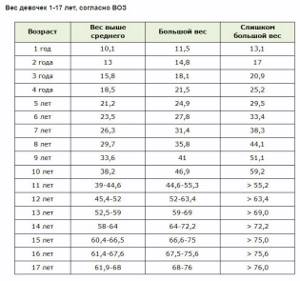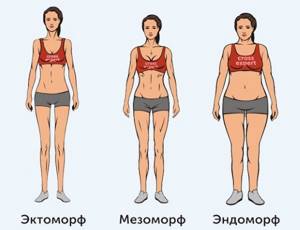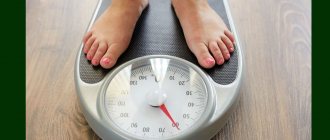- What is body mass index?
- What is BMI used for?
- Why is it convenient to use the body mass index?
- How to calculate body mass index for women?
- What is an online BMI calculator?
- What does body mass index show for women?
The number of people watching their health and figure is increasing every year.
The main reason for this situation is that in our time, more than ever before, there are more and more people who are either overweight or experiencing a lack of it. One of the leading parameters that allows you to control your weight today is the body mass index. We will talk about what it is, how it is calculated, and how to interpret it correctly in this article. At the same time, let’s pay attention specifically to the body mass index for women, and we’ll talk about men and children another time.
Body mass index formula. One hundred and fifty years of practice
This is a long enough period of time to prove effectiveness and identify a number of shortcomings.
Haven’t opponents of the BMI norm tried to challenge it?
All attempts to prove the inconsistency of this method over the course of fifteen decades have been in vain. BMI continues to be actively used throughout the world. There is no 100% alternative yet. But it should be pointed out that it is necessary to take a reasonable approach to the cult of a slim and healthy body. A template standard is a risk of leveling a person’s individuality. He does not fully take into account all the features of his body and physique.
Focus, first of all, on the main factors that serve to strengthen the health and strength of organs and systems.
This applies to both men and women. We advise everyone to exercise reasonable control over their diet and avoid significant excess weight.
BMI will help you solve this problem correctly. You will learn how to calculate it from our recommendations below.
Degrees of obesity in children in tables
To calculate the degree of obesity, percentile and centile tables are used, which compare the weight, height, gender and age of the child. The advantage of this method of calculation is the opportunity to take an individual approach to the issue. A baby’s body weight is considered overweight when the indicator fluctuates between the 85th and 95th centiles, and obesity begins at the 95th centile.
Centile tables were developed in 2006 based on the Multifocus Growth Reference Study (MGRS). Each country has its own version of the table, taking into account national specifics. Calculations are carried out using standard deviation systems (SDS).
Taking into account WHO recommendations, obesity in children and adolescents should be defined as +2.0 SDS BMI, and overweight from +1.0 to +2.0 SDS BMI.

Body mass index for most people
Determining body mass index does not require special knowledge, skills or difficult mathematical calculations. The calculation formula is based on two indicators - exact weight and height.
Please note that the simplicity of the calculations does not exclude the possibility of erroneous conclusions.
In order to exclude all factors that negatively affect the results:
- Measure your height only after a night's sleep. This figure decreases throughout the day. In the evening he may “sin” by one or two centimeters.
- Use accurate scales from a reputable manufacturer. Best of all, with an electronic sensor.
- Empty your bowels and bladder before weighing.
- Measure your body weight without clothes or in underwear.
- Record as accurate readings as possible immediately after the procedure.
Note. The calculation of the BMI formula requires systematic adjustment. Measure your weight and height daily, every three days or weekly, depending on your specific conditions and circumstances.
Body Mass Index Calculation
The formula for all people involves a simple action: dividing the number of kilograms of weight by the square of the height in meters.
BMI = body weight (kg) / height (m)²
An example of calculating body mass indexes for the following parameters – height 180 cm and weight 95 kilograms: 95 (kilograms) must be divided by 3.24 (1.80 multiplied by 1.80).
We get the result: 29.32 (specific BMI indicator).
Those who are too lazy to find out their BMI using the formula themselves can use a universal online calculator. BMI will be accurately calculated after entering specific height and weight parameters. Preliminary measurement is a mandatory process.
Classification according to Solovyov's method
In accordance with Solovyov's classification, all types of constitution can be divided into 3 types, each of which has a number of distinctive features: asthenic, normosthenic and hypersthenic.
Asthenic or thin-boned (ectomorphs)
This body type is typical for fashion models. Ectomorph women are distinguished by thin facial features, pale skin, elongated limbs, long fingers and poorly developed muscles. They are prone to fatigue, have low hemoglobin levels, and are prone to frequent colds and gastrointestinal problems.
Normosthenic or normal (mesomorphs)
Women athletes. They are distinguished by their proportional figure, well-developed muscles, broad shoulders, narrow waist and hips. They are hardy, can quickly gain weight and lose it without difficulty. They have a tendency to hypertension, diseases of the digestive system and upper respiratory tract.
Don't miss the most popular article in the section: Fashionable bangs of the new season for medium, short, long hair. Photo.
Hypersthenic or broad-boned (endomorphs)
Women collective farmers can be classified as this type. They are stocky, have a powerful torso and well-developed limbs. They have a tendency to be overweight. Endomorphs can be tall and stately, or short and squat.

This body type is characterized by an “apple” or “pear” shape. As a rule, they suffer from hypertension, high blood cholesterol, diabetes and problems with the liver and respiratory system.
Body type can be determined by the Solovyov index, which is equal to the length of the circumference of the wrist of the working hand.
Indicators of the Solovyov index:
| Body type | Indicator, cm |
| Asthenic | Less than 15 |
| Normosthenic | From 15 to 17 |
| Hypersthenic | From 17 |
BMI values. Important list of general recommendations
The World Health Organization has developed a certain gradation scale - for correlation with body mass index, taking into account age and other special characteristics. It helps to identify in time the likelihood of the occurrence and development of a number of serious pathologies and diseases.
Pay attention to the following BMI indicators:
- Up to 16 - The figure indicates a serious problem (for both sexes) - insufficient body weight. A person needs quick and effective help, taking drastic measures to prevent vitamin deficiency, apathy, chronic fatigue, osteoporosis and anorexia;
- From 16 to 18.5 - Indicator of body mass deficiency. To exclude hormonal imbalances, problems with immune defense, and chronic fatigue, you should consult a doctor and identify a number of urgent tasks to prevent more serious consequences.
- From 18.5 to 24.9 - Normal BMI. Indicates excellent physical shape. Average indicator of a healthy body.
- From 25 to 29.9 - BMI in overweight people. There is a serious risk of developing a large list of diseases. Among them are varicose veins, gastrointestinal pathologies, various problems of the heart and blood vessels.
- From 30 to 34.9 - First degree of obesity. Concomitant pathologies - weakened immunity, shortness of breath, cardiovascular diseases, the initial stage of diabetes.
- From 35 to 39.9 - Second degree of obesity. Stress on joints, vascular and heart diseases, severe forms of diabetes, high blood pressure, circulatory problems.
- From 40 and above - Third degree obesity. You should be wary of heart attack and stroke.
Calculate normal mass index using our online calculator:
Important. To determine the most accurate BMI, undergo an extensive examination at a specialized weight loss clinic using innovative equipment. Learn about the ratio of fat and muscle mass necessary for a full life, about weight and indicators that determine the condition of the body. Based on the results obtained, nutritionists will develop a special diet for you.
Disadvantages of determining body weight
The method generally satisfies the specific needs of most people. The main disadvantage is the impossibility of accurate age calculation. The specific constitution of the human body is also not taken into account.
Modern research indicates the need for more accurate measurements, based on a larger number of parameters - age, gender differences, and skeletal structural features. From this point of view, the BMI calculator is an outdated and imperfect calculation tool. But scientists have not found a worthy replacement for it.
Morbid obesity
This type of obesity is dangerous not only for health, but also for life. Such obesity implies an increase in body weight by 50%.
The pathology occurs in 2-4% of the adult population of the Russian Federation. The classification of a disease as severe is due to the complexity of the diseases associated with it. Conservative therapy for morbid obesity is the first stage of treatment, more specifically preparation for bariatric surgery, since the effectiveness of conservative measures for morbid obesity does not exceed 5-10%.
How to determine your ideal weight
Disputes among scientists on this issue have not stopped for many decades. The answer has not yet been found.
There is a very simple standard formula for calculating your weight norm: Subtract 100 from your height.
Many specialized experts will call this result (in kilograms) your individual norm.
The technique does not take into account the age and proportions of the skeleton, and this reduces the accuracy of the calculation. After all, there are many different types of proportions - thin-boned (asthenics), standard, large-boned (hypersthenics).

To compensate for the lack of simple calculation, the French physician and anthropologist in the nineteenth century introduced the so-called Paul Broca formula (under his own name). He proposed an indexing system that took into account racial differences in body and skeletal structure. These are several separate formulas for determining your ideal weight. One of them is still popular among many specialists.
The ideal value is calculated as follows:
- For people shorter than 1.65 m, division by 100 is used.
- From 1.65 to 1.75 m – 105.
- From 1.75 m and above – 110.
Since the proposed method does not take into account age and structural features of the skeleton, it needs amendments.
People under thirty years of age should reduce the result by seven to ten percent. Age fifty years and older – an increase of five to seven percent. For hypersthenics – an increase of ten percent. For asthenics - deduct the same number.
Note. Calculations of normal body weight are relevant only for those who have reached the age of twenty-one. For children, adolescents and young men, it is not possible to determine the ideal weight for a number of reasons associated with significant fluctuations in all parameters taken into account.
Body mass index for men and women by age makes it possible to detect, with the best possible accuracy, a tendency to a specific type of disease.
If, for example, your body weight exceeds the norm by fifteen percent, this is an alarming signal. It should be given serious attention. The time has come to thoroughly change your diet and diet, increase physical and sports activity, and consult with medical specialists about additional measures.
Exceeding the norm by thirty percent means you need a complete change in your worldview, life activity and eating behavior.
For each time cycle of life, only its own individual food preferences are permissible. Nutrition should be appropriate for your age, weight and build. To avoid common mistakes when compiling a list of necessary products, seek help from a nutritionist. This is especially important for women in general and for women over forty in particular. They are more likely to be obese than men. It is also more difficult for them to control their weight.
Egorov-Levitsky table
To find out the maximum acceptable upper weight limits for your age, you can use this table of ready-made values. If your weight is higher at your current age, this means that it requires adjustment.
According to this table, our woman with a height of 160 cm at 26 years old should weigh no more than 60 kg, and at 45 years old - 70 kg, which corresponds to the calculation according to the Quetelet coefficient.
All of the above calculations of optimal body weight are consistent with each other and will certainly help a woman adjust her weight, feel light and at ease at any age.
How to calculate the ideal weight for a girl? You will find the answer to this question in this video:
The norm for women. How to calculate
The right weight for any woman is a feeling of complete physical and mental peace and satisfaction with her body. Discomfort is the trigger that forces you to thoroughly reconsider your eating behavior.
Other important factors indicating a problem:
- Limitation of opportunities to perform previously habitual activities and responsibilities.
- Emerging health problems.
- The presence of a number of potential risks to life.
Note. Possible problems indicated by the last paragraph include type 2 diabetes mellitus, sharp fluctuations in blood pressure, elevated cholesterol levels, cardiac and vascular pathologies.
Determining the ideal “female” weight
This concept is conditional and is associated with a large list of various factors, characteristics and conditions. There are several ways to determine normal weight in women. The most effective and popular of them is body mass index. Most doctors consider this indicator to be important evidence of the absence of disease.
Another way is to calculate the number 110 from the height. You can also determine the pathology by the fat fold. For a woman, it should not be thicker than four centimeters.
Body mass index for women by age. Table
| Age | BMI indicator |
| 20-25 years | 19,6 |
| up to 35 years old | 23, 3 |
| up to 45 years old | 23,5 |
| up to 55 years old | 25,3 |
| after 55 years | 27,4 |
The ideal BMI for women shows the absence of excess fat. The greater the discrepancy between body weight and the individual norm, the greater the likelihood of obesity and the development of a whole list of associated pathologies. Excess weight is a serious reason for additional research and consultation with an experienced psychotherapist.
Specialists must identify the reason (set of reasons) for excess weight or rapid weight loss. It is important not only to provide assistance to a person suffering from obesity and a whole range of related psychological problems. It is also necessary to teach the patient to cope with trouble on his own. And this is a revision of values, a change in lifestyle, the identification of new perspectives and the ability to positively perceive the world without taking into account the negativity that it conceals within itself.
A radical change in your social circle, life background and eating behavior is the secret of your success on the path to a slim and healthy body.
Sounds good, but how to achieve this? Everyday reality and our desires are constantly in conflict with each other.
How to deal with such phenomena as:
- Nervous breakdowns.
- Mental exhaustion.
- Hormonal imbalance
- Fast fatiguability.
- Diseases associated with weakened immunity?
These pathologies are constant companions of both obesity and weight loss. If the disease process is completely ignored, it will take a life-threatening form. That is why it is necessary to accurately determine the entire complex set of preventive actions and effective treatment methods in advance. BMI in such a system of effective assistance is the most important auxiliary element, a simple and accessible diagnostic tool available to any woman.
Distribution of adipose tissue and classification of obesity types
Adipose tissue is distributed differently in men and women. It is important to identify the type of obesity before starting the fight against the pathological condition. There are android and gynoid types of obesity.
The gynoid or female type of obesity (pear-shaped) is characterized by fat deposition in the thighs and buttocks.

The android or male type (apple shape or upper obesity) is characterized by the deposition of an internal fat layer, as well as the localization of fat on the waist and abdomen, which is the reason for the formation of an apple-shaped figure. Obesity of this type in men can lead to the development of diabetes and cardiovascular diseases.
Type of obesity in women
Obesity in women can be of both gynoid and android types.
With piriform obesity, the waist remains quite thin and the hips are full. If a woman has male obesity or abdominal obesity, then the fat is concentrated in the abdomen and waist, and the hips are relatively thin.
Types of obesity in men
The female type of obesity is rarely observed in men. In most cases, a sign of obesity in the stronger sex is a beer belly. Fat deposits can also be localized in the waist area.
Obesity in men is a particularly dangerous phenomenon and requires urgent intervention, since serious diseases develop against the background of pathology, including erectile dysfunction.
Waist to hip ratio
Since obesity is a catalyst for the development of various diseases, the waist-to-hip ratio (WHR) is calculated to determine the likelihood of developing diabetes or cardiovascular disease. For men, the indicator should be a maximum of 1.0, for women - 0.85. If the indicators exceed the norm, then we can talk about the existence of a risk of the above pathologies.
Waist measurement
An important indicator is waist size. For men, the norm is 94 cm, for women – 80 cm. Exceeding the norm indicates a risk of developing diabetes mellitus or pathologies of the heart and blood vessels.
conclusions
Finding a problem leads to finding the most effective solution. An experienced psychologist can greatly help you with this. He will determine the right motivation and teach you how to fight complexes and bad habits. The attending physician will prescribe a period of rehabilitation therapy, and the cosmetologist will help cope with the loss of elasticity and smoothness of the skin after active weight loss.
The next difficult stage for many patients is complete adaptation to society. People have become unaccustomed to full-fledged social, family and work connections. Friends, relatives, and colleagues should help restore them with the least psychological loss.
Use a set of weapons that are very dangerous for him to fight Sly Fat:
- leisure,
- physical work and sports activities,
- moderate, balanced diet,
- constant contacts with doctors, nutritionists and psychologists.
Related posts:
How to develop immunity to coronavirus?
Test check yourself:
fact or fiction?
Eating more fruit can improve bone density.
Correct! Wrong!
Consuming foods with plenty of bioavailable calcium improves bone density. Fruits generally do not contain much calcium.
Excess protein accumulates in the muscles, causing them to increase.
Correct! Wrong!
Once the need for protein and energy has been met, excess amino acids are converted to acetyl-CoA, from which they are converted into fatty acids and stored in adipocytes. Therefore, excess protein will not be converted into muscle.
What degree of obesity is accepted into the army?
The possibility of granting a conscript a deferment or exemption from the army depends on the degree of obesity. The first degree of obesity, when body weight exceeds the norm by 25-29%, cannot become a reason preventing recruitment into the ranks of the Armed Forces. A conscript with such a diagnosis receives fitness category A-2 and can serve in any army.
In case of second degree obesity, when body weight exceeds the norm by 30-50%, the issue is regulated according to a special document - the Schedule of Diseases. Paragraph D of Article 13 indicates that a man of military age who has grade 2 obesity is subject to conscription for military service in accordance with the current legislation of the Russian Federation. A young man with such a diagnosis is assigned fitness category B-3. This category means that the conscript will serve in certain types of troops after the young fighter course.

If a young man has grade 3 obesity, when his body weight exceeds the norm by 51-99%, he has the opportunity to receive a military health certificate after passing the second medical commission. At the first medical examination, such a conscript is given a deferment of 6 months, the purpose of which is to treat the pathology. If, after the deferment, the health condition does not improve, and the diagnosis is once again confirmed during the next conscription campaign, then the military commission recognizes the citizen as limitedly fit and assigns fitness category B. The category involves obtaining a military health card and enlistment in the reserves.
Obesity of the 4th degree, when body weight exceeds the norm by 100%, provides the citizen with fitness category D, which exempts him from military duty even in wartime. With 4 degrees of obesity, the category of unfitness is assigned already on the first call. The conscript simply needs to present documents confirming the diagnosis and come to the meeting of the draft commission. People with such a diagnosis are not accepted into the army.
Excess weight and obesity are serious pathologies that can not only deprive a person of everyday joys, but are also fraught with the risk of a number of diseases and loss of the ability to move freely. Preventing weight problems will help you avoid developing health-threatening diseases that reduce your quality of life.










